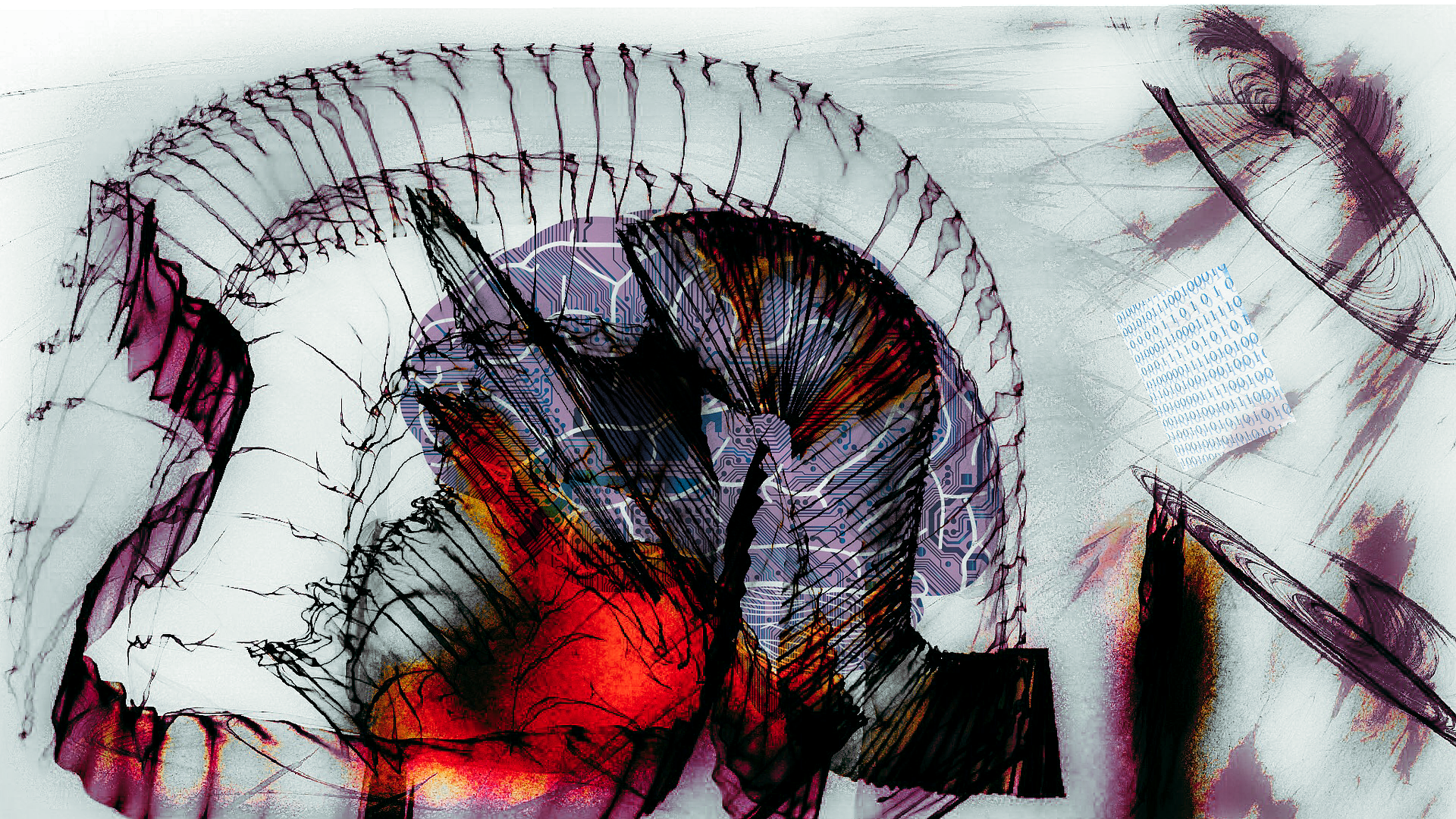There’s been quite a buzz around a new study that found extremely high levels of aluminium in the brains of donors diagnosed with autism. This was the first time aluminium has been measured in brain tissue in autism. The study was carried out by Professor Exley’s team at Keele University, who earlier this year also published findings of excessive aluminium in the brains of Alzheimer’s patients. So how is all this aluminium getting into these brains?
To put these new findings into context, here’s the background to this research. Professor Christopher Exley, also known as ‘Mr Aluminium’, has been researching aluminium for over 30 years and has published over 150 scientific papers on it. In 2016, Exley’s team developed a novel testing method to both quantify and visualise aluminium in the brain, which has the catchy name of ‘transversely-heated graphite furnace atomic absorption spectrometry’. This is important because prior to this, volume of aluminium in brain tissue was measurable but there was no way to visualise it as the spectroscopically silent aluminium cation (Al3+) doesn’t lend itself to the imaging techniques routinely used to identify other metal ions in human brain tissue. Being able to image the aluminium using fluorescent microscopy helps identify the exact location of the aluminium and which cells it’s associated with, which helps understand it’s role in illness and how it gets there.1
Summary of the new study on brain aluminium in Autism2
The team used brain tissue from 3 female and 7 male donors who died with a diagnosis of ASD. The samples were from various areas of the brain: temporal, frontal, parietal and occipital lobes and the hippocampus.
Results showed aluminium present in all samples from around the brain, in inflammatory cells in meninges, vasculature, grey and white matter, suggesting an extraordinarily high level of aluminium in the brain as a whole, and implicating aluminium in the development of autism. The aluminium was found both intracellular (inside cells) and extracellular (in the matrix around cells). In males the majority was intracellular and in females the majority was extracellular.
Aluminium showed up in non-neuronal cells such as microglial and other immune cells. The microglia are the specialised immune cells that provide the first line of defence for the central nervous system and the fact that these microglia are heavily loaded with aluminium shows that the aluminium has crossed the blood-brain barrier and been taken up by the microglia. Aluminium-laden lymphocytes and monocytes suggest an intracerebral insult to have allowed egress of these immune cells from the blood vessels.
Levels were particularly high in the males, finding some of the highest values for brain aluminium content ever measured in healthy or diseased tissues in these male ASD donors. One sample was from a donor only 15 years old, with the closest comparison in the scientific literature being a 42-year old man with Alzheimer’s Disease. 15 years is a very short time to have accumulated such a load of toxic aluminium, so how it is getting there?
Summary of the study on brain aluminium in Alzheimer’s3
Using the same technique, the first ever measurements of aluminium in the brains of Alzheimer’s Disease patients were published earlier this year. The study took brain tissue from 12 donors with autopsy-confirmed familial Alzheimer’s Disease, also from temporal, frontal, parietal and occipital lobes and the hippocampus.
In the Alzheimer’s brains the aluminium was extremely high but more focal than homogenous in it’s distribution. The majority was extracellular and mostly in grey matter.
Aluminium implicated in development of disease
Both Alzheimer’s and Autism are considered to be a dynamic interplay between a range of different environmental factors, predisposing genetic factors, complex epigenetic mechanisms and immunological factors.4 Aluminium is an environmental factor implicated in both. Multiple Sclerosis is another neurological illness that has been linked to aluminium toxicity.5 Neurons seem particularly affected by aluminium toxicity, which could be due to the longer lifespan of neurons leading to greater accumulation over time. But it’s not just neurological illnesses that are caused by aluminium, risk of breast cancer has also been correlated with the use of aluminium-containing underarm antiperspirant,6 and high levels in semen have been implicated in low sperm count.7
Why is aluminium such a problem?
Aluminium is everywhere today due to it’s huge success in industry, but it wasn’t bioavailable throughout our evolution. This we know because of the strong binding of aluminium to ATP relative to it’s usual co-factor, magnesium, during phosphorylation of glucose. The fact that aluminium interferes with something so fundamental in human biochemistry as this first stage of glucose metabolism, indicates that this reaction would not have been selected during evolution in the presence of biologically available aluminium. Although it’s the most abundant metal on Earth, aluminium had always been bound to silica in a form that is non-toxic. On it’s own aluminium has no biological function, no known benefit in any living organism and it is only toxic. The activities of man have increased our exposure over the last 130 years, and it accumulates in us over time, needing to reach a threshold to become neurotoxic. That threshold can be determined by our genetics and epigenetic factors.8
What sources of aluminium are we exposed to?
Sources of aluminium today are plentiful and it helps to reduce exposure in as many ways as possible. Those sources include processed drinks and foods; aluminium packaging in cans and cartons, aluminium foil and trays, aluminium cooking pans and utensils, all of which leach aluminium into the food or drinks we then ingest. This is especially the case when the food is acidic, for example canned tomatoes or phosphoric acid in fizzy drinks. Aluminium is also present in medications, especially antacids and buffered aspirin; in cosmetics, particularly antiperspirant and sunblock; and in vaccines, where it is used as an adjuvant for the purpose of artificially irritating the immune system to provoke a response. Even the air we breathe contains aerosolised aluminium nanoparticles that are inhaled.
Do inhaled aluminium nanoparticles reach the brain?
These ultrafine airborne particles have different characteristics and are likely more toxic than conventional-sized particles. The use of aluminium nanoparticles in jet fuel and munitions means that the most likely scenario for aluminium nanoparticle exposure is inhalation.9 These airborne aluminium nanoparticles are everywhere and even get into our homes with aluminium showing up as the most abundant metal in household dust.10 Inhalation affects the respiratory system and lung tissue is a primary target, where these nanoparticles have been shown to cause toxicity and mitochondrial dysfunction by increasing reactive oxygen species and lipid peroxidation. Aluminium nanoparticles are able to change gene expression in bronchial epithelial cells, specifically mitochondrial-associated genes, leading to apoptosis (programmed cell death) in lung tissue cells following exposure.11
But what about the high levels of aluminium seen in the brain? It’s been observed that nanoparticles inhaled through the nose deposit on the olfactory epithelium and migrate to the brain along the olfactory bulb, which could provide a portal of entry into the brain bypassing the blood-brain barrier.12-13 Could this nose-to-brain translocation of inhaled aluminium nanoparticles be involved in aluminium found in microglia cells in the brain samples of the autistic donors?
Glyphosate carries aluminium into the brain
Another proposed mechanism for aluminium’s entry into the brain is it’s deadly double act with glyphosate. Glyphosate, the most widely-used weedkiller and main ingredient in RoundUp,
tightly binds aluminium and carriers it through the gut barrier into general circulation and on to the brain.14 Glyphosate also acts as a glycine analogue. Glycine is an amino acid used throughout our body, and by mimicking glycine, glyphosate tricks the immune system into allowing it entry and also to cross the blood-brain barrier.15 As well as being an amino acid, glycine is also a neurotransmitter and there are many glycine receptors present on cells in the brain, including glial cells. Could this also be a potential factor in uptake of glyphosate-bound aluminium into brain tissue?
Monsanto who make RoundUp claim glyphoste is safe for humans as it kills plants by disrupting the shikimate pathway present in plants but not present in animal cells, but they ignore the fact that bacteria have the shikimate pathway which means there’s a significant impact on our microbiome. The glyphosate wipes out our beneficial gut bacteria which we need to make essential nutrients that our own cells can’t manufacture, including B vitamins and essential amino acids that act as precursors for our neurotransmitters. When the microbiome becomes dysfunctional, the immune system takes a massive hit and there’s an increase in intestinal permeability leading to various chronic conditions and autoimmune diseases.
One of the main targets of the glyphosate-aluminium duo is the pineal gland in the brain, leading to pineal gland calcification. The pineal gland makes a very important hormone called melatonin, and when there’s increased calcification there’s less melatonin. We need melatonin for sleep, but this important hormone also protects the brain from toxins and is able to bind and detox aluminium.16
We know that calcification of the pineal is much worse in neurological conditions. In a postmortem study of 85 Alzheimer’s patients, melatonin measured in the cerebrospinal fluid was only 20% of that in age-matched controls, and CT scans showed the amount of calcification of the pineal was significantly more in those with Alzheimer’s than normal controls.14 Glyphosate-aluminium also depletes manganese which is needed to convert glutamate to glutamine, which ultimately makes glutamate more toxic, and high glutamate is commonly found in autistic children.
Bringing it all together
There is no denying that pathogenically high levels of aluminium are able to accumulate in brain tissue, and this appears to be a causative factor in both autism and Alzheimer’s Disease. Because of the ubiquitous nature of aluminium, it is likely that it builds up over time from a variety of sources, eventually reaching a threshold when symptoms appear. Inhaled aluminium nanoparticles may be able to reach the brain via the olfactory bulb and aluminium’s entry into the brain may also be assisted by glyphosate. Glyphosate also deposits aluminium in the pineal gland, reducing melatonin production, which allows greater accumulation of aluminium in the brain. Reducing exposure to both aluminium and glyphosate would be a good strategy, but aerosolised nanoparticles are impossible to avoid as we all have to breathe, so strategies to safely detoxify the brain would be recommended to reduce the overall burden.
References
- Mirza A, King A, Troakes C, Exley C (2016) The Identification of Aluminum in Human Brain Tissue Using Lumogallion and Fluorescence Microscopy. J Alzheimers Dis. 54(4):1333-1338.
https://www.ncbi.nlm.nih.gov/pmc/articles/PMC5088403/ - Mold M, Umar D, King A, Exley C (2017) Aluminium in brain tissue in autism. Journal of Trace Elements in Medicine and Biology https://doi.org/10.1016/j.jtemb.2017.11.012
- Mirza A, King A, Troakes C, Exley C (2017) Aluminium in brain tissue in familial Alzheimer’s disease. J Trace Elem Med Biol. 40:30-36.
https://tinyurl.com/yd6cs453 - Morris G, Puri BK, Frye RE (2017) The putative role of environmental aluminium in the development of chronic neuropathology in adults and children. How strong is the evidence and what could be the mechanisms involved? Metab Brain Dis. 32(5): 1335–1355.
https://www.ncbi.nlm.nih.gov/pmc/articles/PMC5596046/ - Exley C, Mamutse G, Korchazhkina O, Pye E, Strekopytov S, Polwart A, Hawkins C (2006) Elevated urinary excretion of aluminium and iron in multiple sclerosis. Mult Scler. 12(5):533-40.
https://www.ncbi.nlm.nih.gov/pubmed/17086897 - Linhart C, Talasz H, Morandi EM, Exley C, Lindner HH, Taucher S, Egle D, Hubalek M, Concin N, Ulmer H (2017) Use of Underarm Cosmetic Products in Relation to Risk of Breast Cancer: A Case-Control Study. EBioMedicine. 21: 79–85.
https://www.ncbi.nlm.nih.gov/pmc/articles/PMC5514401/ - Klein JP, Mold M, Mery L, Cottier M, Exley C (2014) Aluminum content of human semen: implications for semen quality. Reprod Toxicol. 50:43-8.
https://www.ncbi.nlm.nih.gov/pubmed/25461904 - Exley C (2014) Why industry propaganda and political interference cannot disguise the inevitable role played by human exposure to aluminum in neurodegenerative diseases, including Alzheimer’s disease. Front Neurol. 5:212.
https://www.ncbi.nlm.nih.gov/pmc/articles/PMC4209859/ - Braydich-Stolle LK, Speshock JL, Castle A, Smith M, Murdock RC, Hussain SM (2010) Nanosized aluminum altered immune function. ACS Nano. 4(7):3661-70.
https://www.ncbi.nlm.nih.gov/pubmed/20593840 - Gustafsson Å, Krais AM, Gorzsás A, Lundh T, Gerde P (2017) Isolation and characterization of a respirable particle fraction from residential house-dust. Environ Res. 161:284-290.
http://www.sciencedirect.com/science/article/pii/S0013935117316717?via%3Dihub - Li X, Zhang C, Zhang X, Wang S, Meng Q, Wu S, Yang H, Xia Y, Chen R (2016) An acetyl-L-carnitine switch on mitochondrial dysfunction and rescue in the metabolomics study on aluminum oxide nanoparticles. Part Fibre Toxicol. 16;13:4.
https://www.ncbi.nlm.nih.gov/pmc/articles/PMC4715336/ - Oberdörster G, Sharp Z, Atudorei V, Elder A, Gelein R, Kreyling W, Cox C (2004) Translocation of inhaled ultrafine particles to the brain. Inhal Toxicol. 16(6-7):437-45.
https://pdfs.semanticscholar.org/21f5/16c95d44060473d805902b9566e8ebbc8deb.pdf - Garcia GJ, Schroeter JD, Kimbell JS (2015) Olfactory deposition of inhaled nanoparticles in humans. Inhal Toxicol. 27(8):394-403.
https://www.ncbi.nlm.nih.gov/pmc/articles/PMC4745908/ - Seneff S, Swanson N, Li C (2015) Aluminum and Glyphosate Can Synergistically Induce Pineal Gland Pathology: Connection to Gut Dysbiosis and Neurological Disease. Agricultural Sciences, 6, 42-70.
http://file.scirp.org/pdf/AS_2015011220442124.pdf - Samsel A and Seneff S (2016) Glyphosate pathways to modern diseases V: Amino acid analogue of glycine in diverse proteins. Journal of Biological Physics and Chemistry 16: 9–46.
https://www.researchgate.net/publication/305318376_Glyphosate_pathways_to_modern_diseases_V_Amino_acid_analogue_of_glycine_in_diverse_proteins - Limson J, Nyokong T, Daya S (1998) The interaction of melatonin and its precursors with aluminium, cadmium, copper, iron, lead, and zinc: an adsorptive voltammetric study. J Pineal Res. 24(1):15-21.
https://www.ncbi.nlm.nih.gov/pubmed/9468114




Leave A Comment